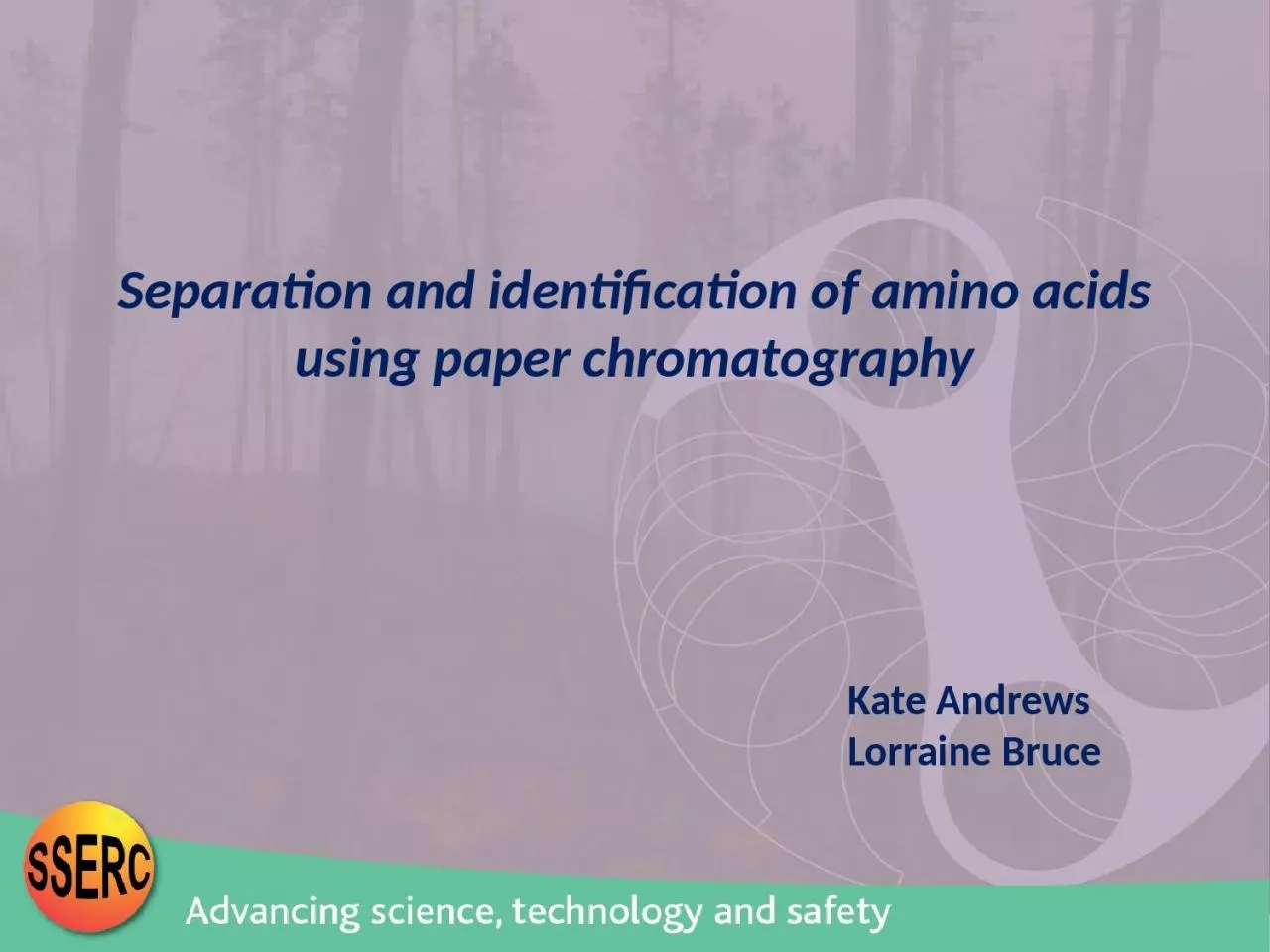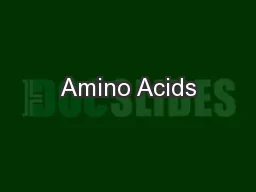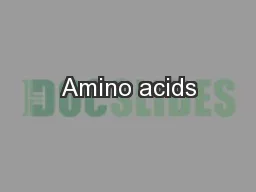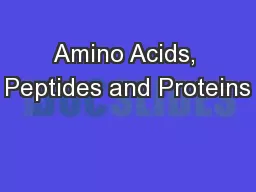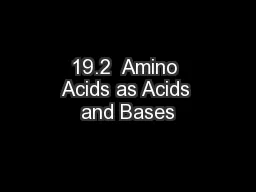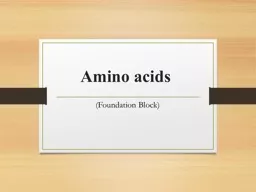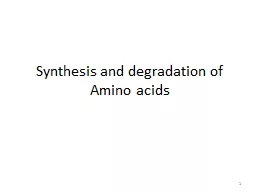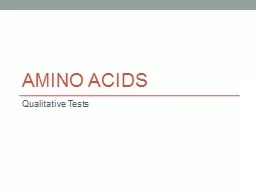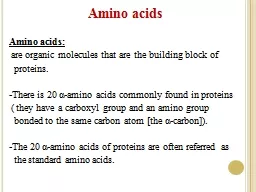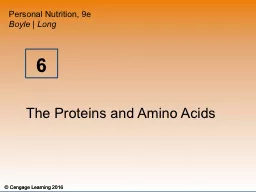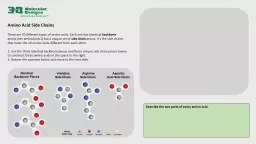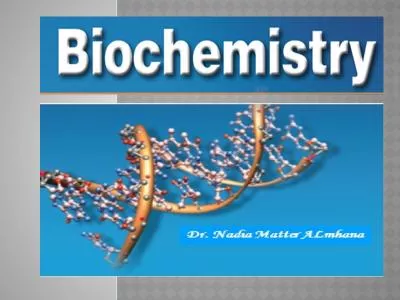PPT-Separation and identification of amino acids
Author : Ruggedheart | Published Date : 2022-08-04
u sing paper chromatography Kate Andrews Lorraine Bruce Unit 1 DNA and the Genome 3 Control of gene expression Separation and identification of amino acids using
Presentation Embed Code
Download Presentation
Download Presentation The PPT/PDF document "Separation and identification of amino a..." is the property of its rightful owner. Permission is granted to download and print the materials on this website for personal, non-commercial use only, and to display it on your personal computer provided you do not modify the materials and that you retain all copyright notices contained in the materials. By downloading content from our website, you accept the terms of this agreement.
Separation and identification of amino acids: Transcript
u sing paper chromatography Kate Andrews Lorraine Bruce Unit 1 DNA and the Genome 3 Control of gene expression Separation and identification of amino acids using paper chromatography Cells and Proteins. What are amino acids?. Amino acids are the building blocks of proteins.. In the body, they exist as zwitterions.. Zwitterions can behave as both an acid or a base.. Today we will:. Study . the acid-base properties of amino acids, . C483 Spring 2013. Questions. 1. . Amino acids with non-. ionizable. side chains are zwitterions when they are ________.. A. ) in any solution . . D) in alkaline solutions only . B. ) at physiological pH, pH = 7.4 . (Foundation Block). Dr. Ahmed Mujamammi. Dr. . Sumbul. . Fatma. Learning outcomes. What are the amino acids?. General structure.. Classification of amino acids.. Optical properties.. Amino acid configuration.. CHAPTER 3, Part 1 . Amino Acids and Peptides . To know the structure and naming of all 20 protein amino acids. To know the structure and properties of peptides and the particularly the structure of the peptide bond.. THE EXCRETION OF AMMONIUM IONS. A part of NH4+ that is formed in the degradation of amino acids is used for the biosynthesis of nitrogen compounds. In most of the land living vertebrates the excess NH4+ is converted in urea and in that form is excreted. In birds and reptiles it is converted into uric acid and in aquatic animals it is directly excreted as urea.. When an amino acid with positive and negative charges is overall neutral in charge, it is said to be at its . isoelectric point (. pI. ). .. . Ball-and-stick model of glycine at its . pI. of 6.0.. Plants and bacteria produce all of their amino acids using NH. 4. +. and NO. 3. –. .. Humans can synthesize 9 of the 20 amino acids found in their proteins.. Nonessential amino acids are synthesized in the body, while essential amino acids must be obtained from diet.. (Foundation Block). Learning outcomes. What are the amino acids?. General structure.. Classification of amino acids.. Optical properties.. Amino acid configuration.. Non-standard amino acids.. Derivatives of amino acids.. 1. . Overview. The catabolism of the amino acids involves:. Removal of α-amino groups. . Breakdown of the resulting carbon skeletons.. The resulting compounds will be used to form seven intermediate products: . Amino Acids. Amino acid play A central role as building block of proteins.. Amino acids also converted to specialized products.. More than 300 different amino acids have been described in nature, only 20 are commonly found in mammalian proteins... . are organic molecules that are the building block of . . proteins. .. -There is 20 . α. -amino acids commonly found in . proteins. . ( . they . have a carboxyl group and an amino group . . . 6. 6.1 Differentiate . between essential amino acids and nonessential amino acids.. 6.2 List . the functions of protein in the body.. 6.3 List . the steps for protein digestion and absorption in the body. . backbone. . atoms . (see aminoAcids1). but a unique set of . side chain . atoms. It's the side chains that make the 20 amino acids different from each other. . 1. Use the three identical backbone pieces and three unique side chain pieces below to construct three amino acids in the space to the right.. imino. acid.” . Figure 5: Comparison of the secondary amino group found in proline with the primary amino group found in other amino acids such as alanine.. 2. Proline: . Proline differs from other amino acids in that its side chain and amino N form a rigid, five -member red ring structure (Figure 5). Proline, then, has a secondary (rather than a primary) amino group. It is frequently referred to as an “.
Download Document
Here is the link to download the presentation.
"Separation and identification of amino acids"The content belongs to its owner. You may download and print it for personal use, without modification, and keep all copyright notices. By downloading, you agree to these terms.
Related Documents

